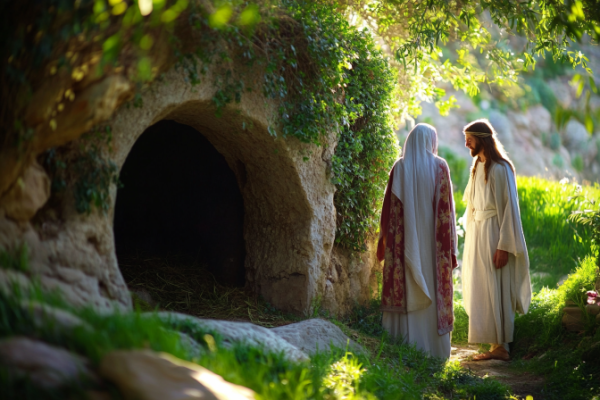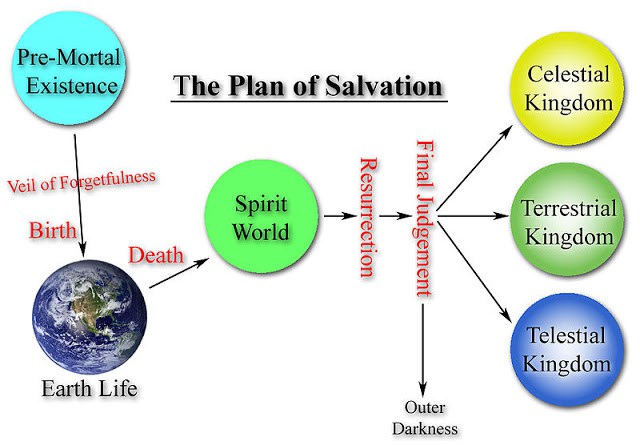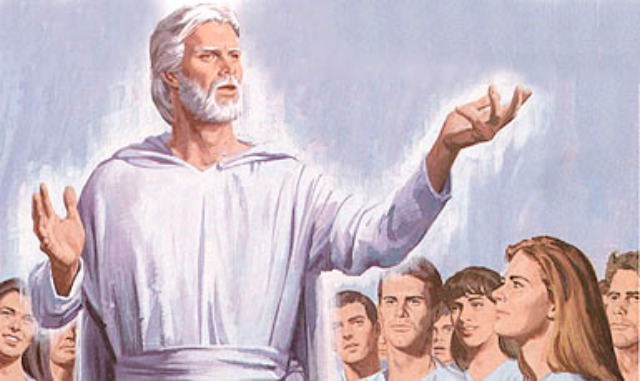Question
Gramps,
Why was Mary not allowed to touch Christ before He saw God?
Mary
Answer
Mary,
After His death on the cross, Christ’s spirit entered the spirit world, where He preached to the souls who had died before His resurrection. This period is often called the “harrowing of hell,” where Christ offered salvation to the righteous who awaited His coming. The Gospel of Luke recounts that He was with the thief on the cross, promising him paradise (Luke 23:43).
Following His resurrection, the women, including Mary Magdalene, were the first witnesses to the empty tomb. The Gospels recount that early on the third day after His death, Mary and other women went to the tomb to anoint Jesus’ body, only to find the stone rolled away and the tomb empty. An angel informed them that Jesus had risen, and they were instructed to tell the disciples (Matthew 28:1-7).
Mary Magdalene’s encounter with the risen Christ is particularly noteworthy. As she lingered at the tomb, grieving, she encountered Jesus, who called her by name. In this moment, He instructed her not to touch Him, stating, “Touch me not; for I am not yet ascended to my Father” (John 20:17). This command has sparked much speculation and theological discussion regarding its significance.
Mary Magdalene is often misunderstood and misrepresented in popular culture. The Gospels portray her as a devoted follower of Jesus, who was present at His crucifixion and the first to witness His resurrection. She is described as having been healed by Jesus from seven demons (Luke 8:2), which signifies her transformation and deep commitment to Him.
Mary’s role in the resurrection narrative is crucial. She is not only a witness but also the first to proclaim the resurrection to the apostles. This highlights her importance in the early Christian community and her position as a leader among the women who followed Jesus. The fact that Jesus chose to reveal Himself first to Mary, rather than to one of the male apostles, shows her significance and the breaking of societal norms of the time.
The relationship between Mary and Jesus is often interpreted through the lens of a deep spiritual connection. Some scholars suggest that her encounter with the risen Christ was not merely a physical meeting but a profound spiritual experience. The Greek word used in the scripture for “touch” (haptomai) can also mean to cling to or adhere to, suggesting that Mary may have rushed to embrace Jesus in her joy and disbelief.
The command given to Mary Magdalene not to touch Jesus has led to various interpretations. Some theologians argue that this directive signifies a transition in Jesus’ state from mortal to resurrected being. The resurrection is a transformative event, and Jesus’ statement may imply that He was in a state of ascension, preparing to return to the Father. Mary’s touch could have interfered with this process.
Moreover, the encounter between Mary and Jesus raises questions about the nature of divine revelation and personal experience. In the context of The Church of Jesus Christ of Latter-day Saints, it is believed that personal revelation is available to all individuals, regardless of their status or gender. The scriptures affirm that God is no respecter of persons (Acts 10:34), and this principle is exemplified in Mary Magdalene’s experience. Her encounter with the risen Christ serves as a reminder that divine communication is accessible to all who seek it with a sincere heart.
The significance of Mary Magdalene’s role extends beyond her personal experience; it reflects the broader theme of women’s involvement in the early Church. Her witness and testimony of the resurrection challenge traditional gender roles and highlight the importance of women in the gospel narrative. This theme resonates with the teachings of modern-day prophets, who emphasize the vital contributions of women in the Church and society.
Gramps







